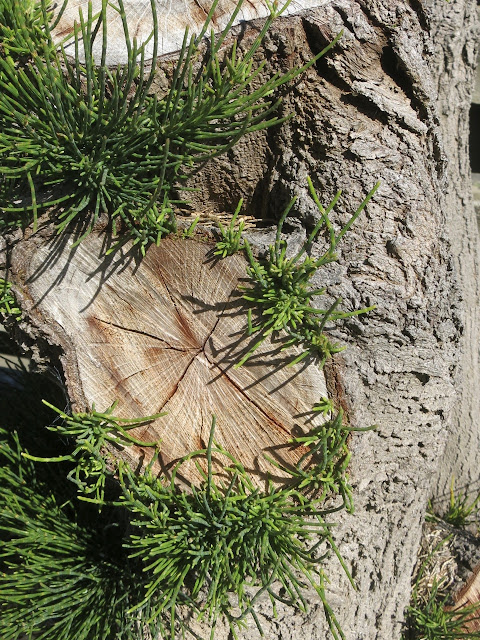Summer time is the main flowering season of the Moonah, melaleuca lanceolata, which grows extensively on the cliff tops at Torquay.
As the 'bottle-brush' flowers are at the end of the branches, the effect during the flowering is of a mass of white covering most of the bushes.
Here on the cliffs they are low growing, hugging the ground, looking very neat and compact having been 'trimmed' by the wind.
In such exposed situations the branches become beautifully contorted into quite extraordinary shapes. When these larger branches fall into the sea and become bleached driftwood, the branch surface can have a quite satiny appearance.
Away from the strong winds, Moonah can grow into small trees with a lovely dense canopy. They are to be seen in some of the older gardens in Torquay, like this one growing in Pearl St.
I decided to make a 'mass and line' ikebana arrangement using some Moonah in a ceramic vessel with warm earthy characteristics. The vessel was made by Margaret Hall, Director of the Australian Sogetsu Teachers Association Inc, New South Wales Branch.
Greetings from Christopher
27th January 2018
































